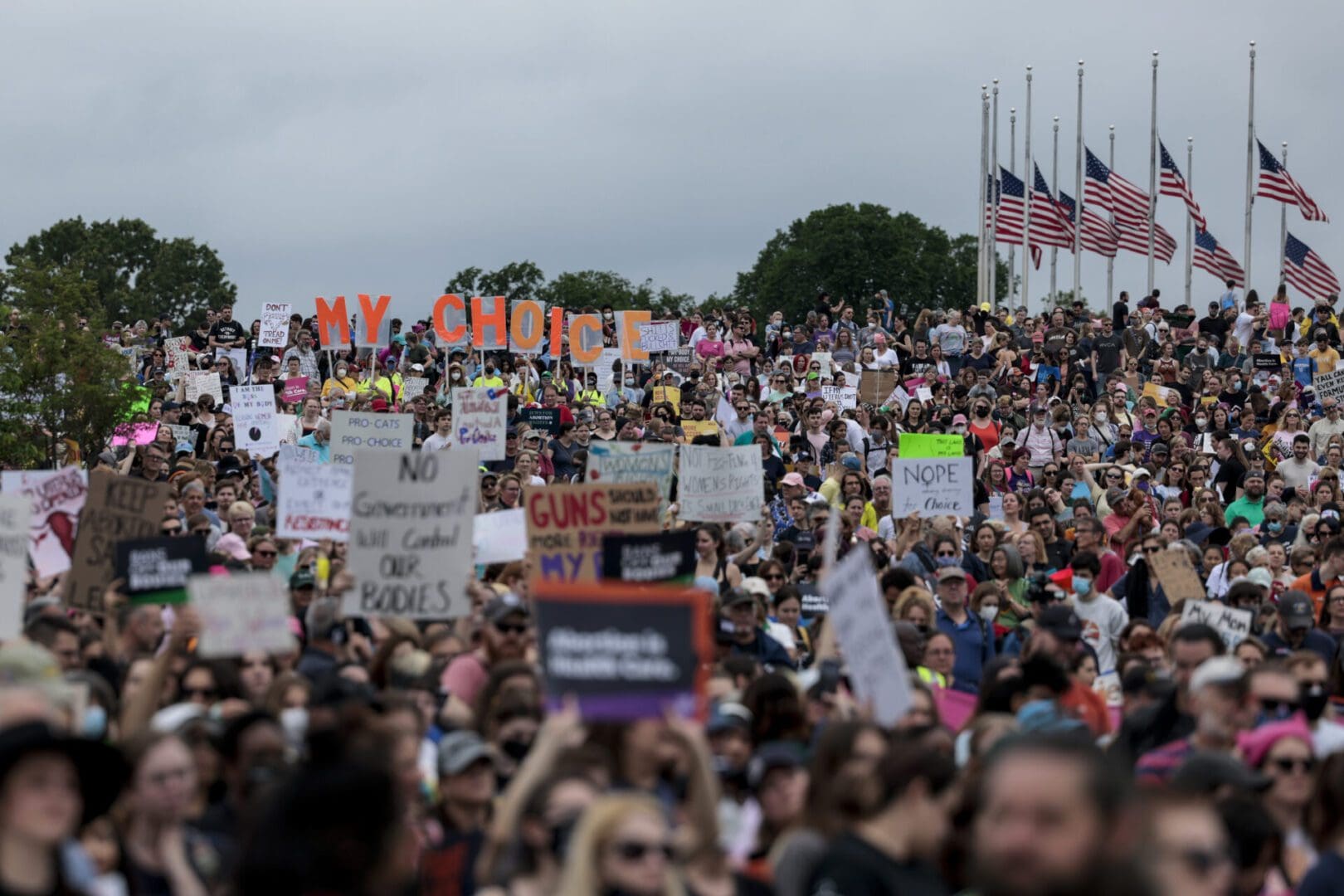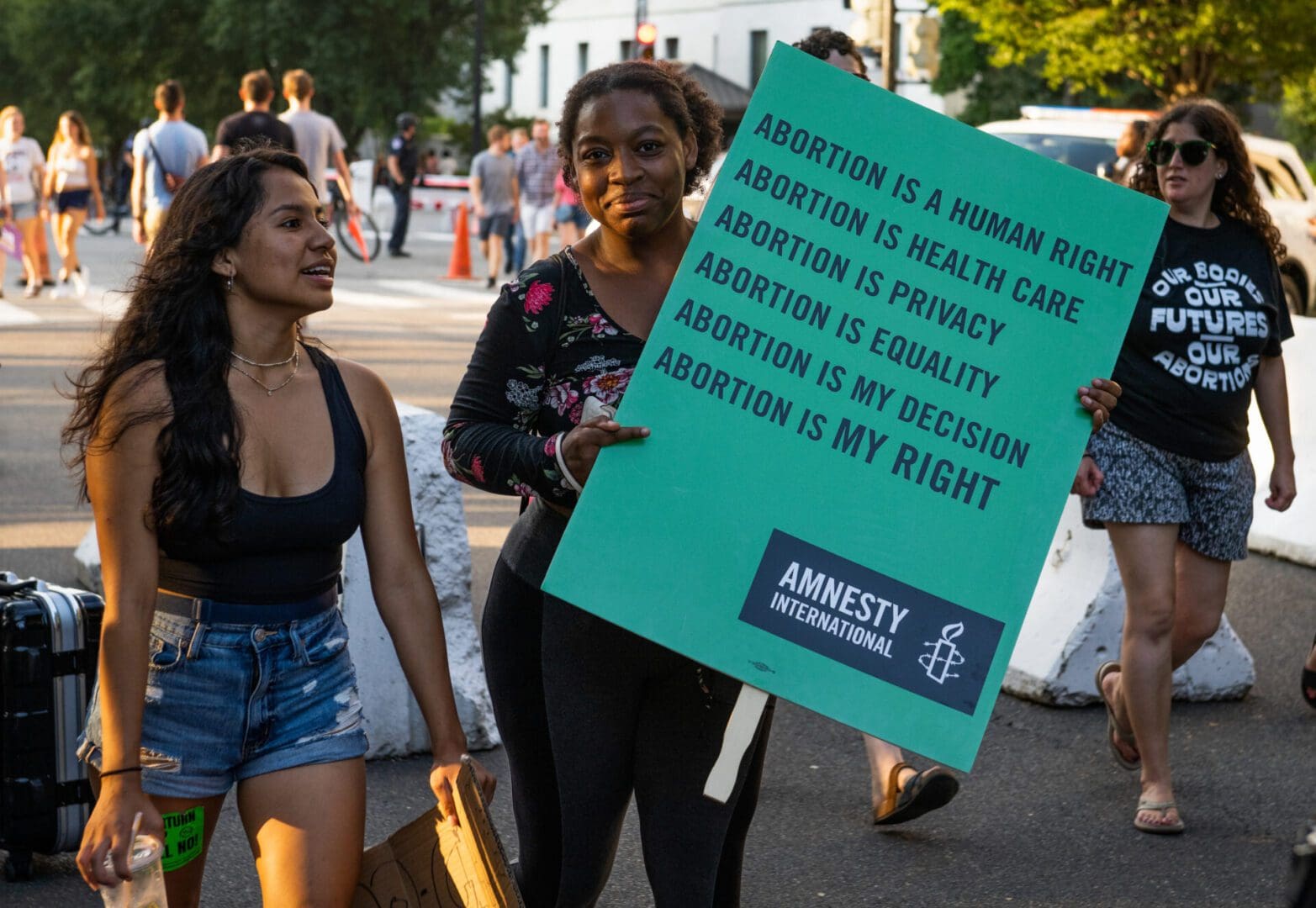Staying informed about the facts about abortion is one of the most powerful ways to combat misinformation and abortion stigma.
To help fight stigma and advocate for abortion access, it can be helpful to know exactly what an abortion procedure is. There are two types of abortions: medication abortion and in-clinic abortion.
- Medication abortion, commonly known as the “abortion pill,” is what most people call the two medicines a pregnant person takes to end their pregnancy: mifepristone and misoprostol. This is a type of self-managed abortion. Pregnant people can take the abortion pill up to 11 weeks after the first day of their last period. It’s a very effective method of abortion for those who are early in their pregnancy, and in some states pregnant people can receive the pill via mail if they use telehealth services. State legislatures are increasingly seeking to criminalize and restrict the abortion pill.
- In-clinic abortion includes both suction abortion and dilation and evacuation (D&E). Suction abortion uses suction to empty the uterus, and can be used up to 16 weeks after a pregnant person’s last period. A D&E uses suction and medical tools to empty the uterus. This method can be used later in a pregnancy than a suction abortion (beyond 16 weeks since a pregnant person’s last period).
Both methods of abortion are heavily legislated. Read on in the abortion ban section below for more information.
- Abortion is a human right.
Denying safe and legal access to abortion is a dangerous violation of that right. Access to abortion ensures people have the right to autonomy and privacy; liberty and security of person; equality; non-discrimination and equal protection; and health, life, and in some cases to be free from torture. Learn more here. - Abortion is essential, normal, and lifesaving.
Abortion is a healthcare procedure, and it’s very common. About 1 in 4 women will have an abortion in her lifetime in the USA (data is not available for transgender men or non-binary people who get abortions). Categorizing abortion as somehow medically different than any other procedure contributes to stigma, which can lead to additional discrimination and human rights violations.
- Abortion is routine and safe.
Abortion is one of the safest medical procedures a patient can receive. The risk of complications that require medical attention is less than 1 percent.
- The majority of Americans believe the right to abortion should be protected.
Americans can have complicated feelings about abortion, but what is clear is that the majority of Americans DO think abortion should be legal in all or most cases and do NOT support banning abortion. Yet many government officials are out of sync with these views; gerrymandering and big money influence in politics has led to disproportionate numbers of anti-abortion decision-makers in state legislatures, Congress, and the courts.
Anti-abortion legislators employ many different tactics to pass abortion restrictions in states across the country. Make no mistake: all abortion bans are extreme and ANY abortion restriction is put in place with the ultimate goal of chipping away at bodily autonomy bit by bit to ban abortion entirely. Some of the most common abortion restrictions are listed below.
- Total or “near-total” abortion bans.
The map of where abortion is banned is constantly changing, but as of 2023, a vast swath of states have banned abortion through either a total or “near-total” ban (an abortion ban with extremely limited exceptions). But make no mistake: bans that include “exceptions” (e.g. for the life of the pregnant or in cases of rape) are functionally total abortion bans. Abortion bans put the lives of pregnant people at risk, and create difficult scenarios for medical providers who have to consider these bans when providing care.
- Six-week abortion bans.
Anti-abortion disinformation has led to the rise of six-week abortion bans, oftentimes misleadingly called “heartbeat” bills, that ban abortion after fetal tissue activity is detected via ultrasound. This is often before many patients know they are pregnant, cutting off access to medical care before a pregnant person may even know they need it. 6-week abortion bans are functionally total abortion bans.
- Gestational limit restrictions.
These bills dictate the point during pregnancy when an abortion is permissible. These limits can be arbitrary, and vary greatly by state or country.
- Arbitrary and invasive clinic and provider requirements.
When a patient reaches an abortion clinic, there are sometimes arbitrary hoops they are made to jump through designed by anti-abortion legislators to dissuade them from accessing abortion care. These can include unnecessary ultrasounds, state-mandated and inaccurate scripts about abortion, biased counseling, and waiting periods of up to 72 hours, and requirements that patients visit clinics twice (once to consult with a provider and once for the procedure itself). Some states mandate transvaginal ultrasounds, which require a wand to be inserted into a pregnant person’s vagina, and can be retraumatizing for survivors of rape, assault, and abuse. These types of restrictions are often called TRAP laws and serve no medical purpose and are in place to make abortion care harder to access. Other medically-unnecessary restrictions can be placed on the clinic or provider themselves, like mandating certain types of building codes, that the medical professional have “visiting privileges” at a separate medical facility, etc. - Abortion method restrictions.
Many states not only restrict abortion based on gestational limits, but also by the type of procedure. Medication abortion—the abortion pill—is particularly targeted by these bans, even more so after the Supreme Court’s overturn of Roe v. Wade in 2022. Because the abortion pill can be safely taken at home and administered via telemedicine appointments, anti-abortion legislators have honed in on patients receiving pills by mail.
We are not just fighting bad legislation; we’re fighting for good legislation! Positive, proactive legislation that protects the right to abortion care can promote human rights in your state and serve as a model for other state legislatures when it comes to protecting the liberty and autonomy of people who can become pregnant. Examples of positive legislation include:
- Bills that codify Roe v. Wade or abortion access at the state level, like New York’s Reproductive Health Act and New Jersey’s Freedom of Reproductive Choice Act. However, Roe v. Wade was the floor for abortion access, not the ceiling. Many more protections are needed to truly secure abortion rights.
- Measures to protect abortion and other sexual and reproductive rights in the state constitution, many of which were approved after the Supreme Court overturned Roe v. Wade in June 2022. Some of those states include California, Vermont, Minnesota, and Illinois, and these measures were approved by ballot measures or recognition by state courts.
- Bills that protect abortion providers and people seeking abortion care, like New York’s package of six bills that established protections for abortion providers targeted from retaliatory actions of anti-abortion states, and ensured New York will be a safe haven for people traveling for care from states where abortion is now illegal.
- Measures that expand the range of qualified healthcare providers available for abortion care provision to include nurses, midwives, physician assistants, and more. As patients are pushed out of hostile states to access care, demand in protected states is only increasing. Maryland, Connecticut, California, Delaware, Washington, and Oregon are some states that allow non-physician medical professionals to provide abortion.
For more examples of state bills and measures that have expanded abortion access after Roe v. Wade check out this map from the Center for Reproductive Rights.
As you may have noticed, Amnesty uses phrases such as “women, girls, and people who can become pregnant,” “pregnant person,” and “pregnant people” when talking about abortion.
This is because transgender and non-binary people get pregnant and have abortions, too, and sometimes have the hardest time accessing non-discriminatory and gender-appropriate reproductive and sexual healthcare, including abortion care. Using gender-exclusive language marginalizes transgender and non-binary people, which can lead to further human rights abuses.
Here, you’ll find some quick links to help you find access to or information about abortion care.
- Need an abortion? Click here.
- Want to learn how to access at-home abortion pill options online? Click here.
- Need help paying for an abortion, or finding transportation, lodging, or childcare for your appointment? Click here.
- Want to talk to someone about an abortion decision? Click here.
- Live outside of the U.S. and need access to abortion pills? Click here.

Abortion IN THE USA
The abortion landscape in the United States changed after the Supreme Court overturned Roe v. Wade, but abortion will always be a fundamental human right.
Access to abortion is a human right. International human rights committees have consistently found that criminalizing abortion violates the rights of women, girls, and people who can become pregnant in a number of ways. But without federal protections for abortion in the United States, more people than ever lack access to this right.
On June 24, 2022, the Supreme Court of the United States shattered decades of precedent by overturning Roe v. Wade. With abortion rights now the decision of individual states, over a dozen states have made abortion illegal, while many more have enacted legal restrictions that make it functionally impossible to get an abortion. 1 in 3 women of reproductive age now live in a state with little or no access to abortion care. People seeking abortion care are increasingly criminalized, particularly Black, brown, and Indigenous people, young people, low-income people, LGBTQ+ people, disabled people, and people living in rural areas, all of whom have been historically targeted by abortion restrictions.
But people are fighting back! And while a significant swath of the country has banned abortion, other states have passed additional proactive protections and expanded abortion access after the the fall of Roe.

More ways to get involved
Amnesty International USA created an abortion rights toolkit with several ways activists like you can get involved in the fight to protect the right to abortions.

